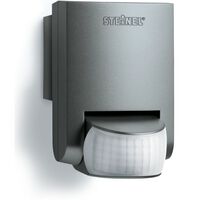Find the best motion sensor for your home
A motion sensor is a crucial security device that keeps you safe while you're away or inside the house. It works by detecting when an intruder is in your home. Motion detectors can be placed into two categories, depending on the technology they use. This includes Passive Infrared sensors or PIR sensors, and Microwave sensors. The motion sensors will detect motion and notify you of the potential threat in your home.
These incredibly useful devices stand guard around the clock, ready to react to any situation. But what motion sensor should you choose? That's a tricky one. With so many options available on the market, you may have to sift through thousands of products to find the perfect motion sensor for your home.
But not to worry. Here is an easy guide to help you find the best protection for you, your family, and your possessions without being bombarded by technical terms.
Detection range
The first thing that probably comes to mind when buying a motion sensor is how far it can detect motion. Motion sensors have different capabilities for detecting a person or object. This usually ranges from 3 – 60 metres. Always choose a motion sensor with a good detection range.
For example, if you have a big home or want to install sensors in a large area, go for a motion detector with a higher detection range. The cost of the motion sensors may vary depending on the detection range, with motion sensors with high motion detection ranges costing more. So, compare your needs with cost and select a motion sensor that gives you value for money.
Power source
Motion sensors can be powered by batteries, electric power grids, and solar. However, most motion sensors are battery-powered. The batteries are replaceable but often last longer because the lights only come on when the sensor detects motion.
Security system compatibility
If you purchase home security systems that come with motion detectors, you won’t need to worry about compatibility. However, if you purchase motion sensors separately, you'll want to ensure the motion detector work seamlessly with the rest of the components.
Sensor sensitivity
Another important point to remember is the motion sensor's sensitivity. Some motion detectors are quite sensitive, while others can be manually turned on and off. For households with pets, choose motion sensors that are not too sensitive because you don’t want the lights to go on and off throughout the day or night.
Wireless motion detector
Most motion sensors sold today are wireless. They are easy to install and do not require special tools or drilling. They can also work with other security components wirelessly. With this type of sensor, it is easier for DIYers to install. You simply need a screwdriver to install them.
Proper installation of motion sensors is important in ensuring optimal coverage for detecting activity. It also helps to avoid false alarms. For motion sensors that require professional installation, the expert will use their skills and experience to set up the sensors. However, if you choose a DIY motion detector, you can easily install it yourself.
It's also a good idea to read the installation manual since it will likely include installation guidelines. An important point to remember is that motion sensors are not foolproof. There will be instances where a false alarm will be triggered.
Placement tips for motion sensors
The best way to increase your motion sensors' effectiveness and reduce false alarms is to read the product's manual. However, you can improve this by trying these placement tips.
-
Ensure the motion sensor is 3 – 4.5 metres from heat sources
Motion sensors tend to trip when they detect a sudden change in heat from sources like heating vents, sunny windows, and radiators.
-
Place the sensors where people are likely to walk through
Remember, the goal of installing a motion sensor is to detect motion, so you want to ensure that it is placed in a strategic position where people walk through regularly. This could be the main hallway or stairwell. This is important in ensuring movement in any direction is detected by the sensor.
-
Identify rooms that intruders are likely to enter
Burglars tend to go straight to the master bedroom or any room with valuables. Also, assess areas that are likely to be used. This could be the front door, back door, or patio door. So, you may also want to put a motion sensor near these rooms.
-
Find walls where intruders are likely to walk along
This could be the hallway or a narrow pathway. Motion sensors are more effective when someone walks parallel to their location and not towards them. For example, in a hallway, you walk parallel to the walls.
Looking for the best motion detector for your home? Feel free to browse through our extensive collection.














































